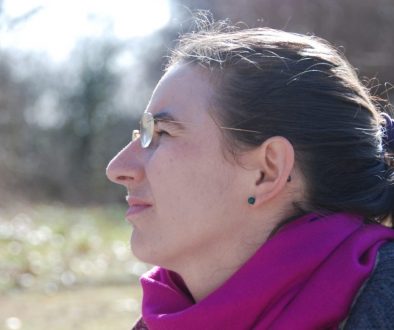Shadow work

What is a shadow?
The word shadow goes back to C.G. Jung. According to his view a shadow is a suppressed part of the personality which has been suppressed into the unconsciousness. It is the opposite part of the „Persona“, which symbolizes the normative socially acceptable part of the personality. From the view of the mystical principles shadows are unconscious parts in which energy is bound which yearns to express itself in order to disappear into nothingness. In the creation process in each moment energy arises out of nothingness, expresses itself completely and returns into nothingness.
bildschirmfoto-2017-02-27-um-12-42-49
If this process is not permitted the energy stays stuck or frozen and therefore cannot express itself. An energy circle arises which constantly spins. This energy creates a pattern, which repeats itself and therefore cannot take part in a vivid, open and new life process. Because the energy continues to express itself one is preoccupied with a way to deal with the freeing of this energy. Shadows are the incongruences between the body, the emotions and the thoughts. If these are not coherent it is a sign of a shadow. One characteristic of a shadow is that it is unconscious like a spot. It is hardly possible for one person to perceive it and therefore it is helpful if somebody else can help become aware of it.
bildschirmfoto-2017-02-27-um-12-42-44Shadows carry a huge potential in that they consist of a lot of energy, which can then be
accessible for creative processes and the unfolding potential of an individual or group. This is why shadow work is light work. The more shadows are dissolved the more energy is freed. The more shadows are transformed the bigger the inner vessel gets to contain the light which comes from above.
How do shadows occur?
According to C.G. Jung the development of a shadow starts already in the first years of life as a consequence of the expectations, requirements, orders and prohibitions of the environment. The shadow grows parallel to the social adapted part of the personality (persona).
From an energetic point of view personal shadows circle around their own center. Blocked or contracted energy develops from diverse situations or traumas in early childhood or later in life. The energy circles are bigger or smaller depending on the weight and intensity of the contraction.
Here are some examples.
In addition to personal shadows we are born into a collective field with a specific culture and a past as well as into a family with specific family topics. Collective and family shadows are collectively shared shadows that create a unique pattern in particular members of the system.
Here you can find some examples for personal and collective shadows:
Example 1: In a talk you hear something about yourself which you experience as unheard or over the top but in that moment you are unable to react immediately. Later on you think of what you could have said in order for the conversation to have moved in another direction. In this case energy continuous to circle into the next interaction. As a consequence, you are still busy in the next interaction with the previous interaction.
Example 2: A child is angry with mother or father because the new born baby receives the attention and the child wants attention from the parents. However to be angry is threatening to the self-esteem of the child because it is completely dependent on being loved by the mother (respective father) for survival. There is a conflict within the child and the solution is to suppress it into the unconsciousness. In this way it is not dangerous for the child to be in relationship with the mother.
Example 3: A child comes to the mother, is very excited and wants to show that it has discovered something new. The mother is busy with something totally different and says ”Don’t disturb me with such an unimportant stuff!”. In this moment the curiosity and joy to explore is not reinforced so the child contracts and withdraws inside himself or herself. The feelings of sadness and grief have been encapsulated. If such and similar interactions repeat themselves there is a trauma. Feelings are frozen and suppressed into the unconsciousness thus become a shadow.
Example 4: A child experiences physical violence in combination with loud ranting from the father. The child cannot flee and cannot fight and therefore experiences feelings of helplessness, sadness and anger that cannot be expressed as that could lead to an escalation of the situation and be dangerous for the child. A trauma develops. The child must cut off his feelings and suppress them.
Example for a collective shadow: The second world war and the holocaust are collective shadows in Germany. Regarding the second world war there are many feelings which haven’t been processed: helplessness in view of the bombs, sadness at loss of relatives or ones lifeplan, the experience of violence or killing as a soldier. Regarding the holocaust feelings of guilt and shame which are still being felt today. Sometimes this shows up as a resistance which has nothing to do with the recent events.
It is the nature of circling energy to want to express. Therefore suppressed unconscious content wants to become conscious. This can happen in different ways, for example referring to example 3, a loud foreign masculine voice can trigger the old situation with the old feelings and the child or the adult becomes afraid again and feels paralyzed. In the case of a collective shadow it might happen that the grandchildren actively ask about the war or memories which is a way to work unprocessed feelings. Energy wants to be released from a frozen state.
How do a recognize a shadow if it unconscious?
To detect a shadow self awareness is needed. There needs to be the willingness to perceive oneself as differentiated and in relation to self. It is helpful to have a loving and explorative attitude towards oneself. Judgmental thoughts are hindering. The loving explorative attitude includes acceptance for what is there.
The observing self-perception begins with the body. The exact observation of all parts of the body and the subtle energy streams within the body is indispensable. The felt sense of the body is being accessed. Perception of self is extended to the emotional landscape.
pastedGraphic.png
Each feeling begins with a movement which can change but as long as there is a feeling there is a movement which can be felt.
We are not able to feel most shadows as they only appear in the company of other people. They either react to them unconsciously or they address them consciously and directly. It is as if someone is shedding light in our dark cellar so that the dusty things become visible. This is what is referred to with “the other mirrors something to me”.
How do I release a shadow?/ How get frozen energy become fluid again?
The transformation of a shadow includes several steps:
Becoming conscious through self observation
Acceptance
Being with the feelings
New integration of the liberated energy into the system
1. Becoming conscious through self observation
bildschirmfoto-2017-02-27-um-12-42-39
The shadow can rise into consciousness through self observation. The energy which wants to liberate itself out of the circle leads to body sensations or emotional expressions or even eruptions (for example rage towards somebody because he or she said something). This first steps requires inner perception.
A self inquiry with the focus on the inner sensations is helpful:
How does the pressure/pain/screaming feels like?
What kind of feeling is related to the pain etc.?
Where do I know the pain/fear from? (For this question it is not so important to find out which exact situation in the childhood caused this shadow. It is not mainly about the cognitive analysis but more about the emotional character of the situation.)
Watch out!
There are primary feelings and there are interpretations of feelings. For releasing of shadows the focus lies on the primary feelings.
Primary feelings:
fear
sadness
anger/rage
shame
joy
Interpretations of feelings:
boredom
being bugged (a hint towards anger)
feeling rejected (a hint towards sadness or anger)
disappointment (often a mixture between anger and sadness)
feeling hurt
feeling humiliated
aversion
The essence is here that you cannot really feel these interpretations. It is more a cognitive activity of the mind to describe feelings. Behind it is a primary feeling which not wants to be felt (yet).
Important!
In the attempt to feel the following can be discerned:
not-feeling
feeling dull
numbness in the emtional sense
indifference
fog
This not-feeling in all its different variations a protect mechanism from the body against the (assumed or possible) flooding of underlying feelings. It is very important to take this protect mechanism serious and to accept it.
2. Acceptance
The first fleeting feeling that arises is mostly experienced as unpleasant. The next step to accept that this feeling is here at the moment. By accepting this (for example anger) it doesn’t need to be projected onto someone else outside. Instead responsibility can be taken for this feeling. From a spiritual point of view this is a surrender to the moment. As soon as there is acceptance of the reality of the moment the next step can follow.
3. The “being“ with the feelings:
Being with feelings is the core element of the shadow work. The challenge is to be with the particular feeling meaning to perceive it and to feel it to the extent possible. In addition it is helpful to anchor the feeling in the body instead of allowing thoughts and explanations or interpretations to take over. This is also the case when “not-feeling”, or numbness or feeling dull. That it is about feeling this. It is only when “not-feeling” is accepted that underlying feelings will appear.
During daily life we mostly avoid to feel the unpleasant feelings and try to run away from them. The work of transforming trauma consists of creating a space in which these feelings can be felt. It is helpful to witness whats happening. If identification with the feeling is too strong a drama is created. The witnessing part helps touch the feeling like a finger in a hot bath tube. The aim is not a dramatic re-experience of the feeling but to be connected with the feeling with the witness.
This process proceeds in waves. After the discernment of the shadow and the self-exploration one can observe an inner space within the body and feelings. Again another shadow may be perceived which precipitates the next cycle with self-exploration and feeling the new feelings.
For this process it is not important to know in which situation the feelings occurred. The most relevant element in this energetic process is the liberation of the energy through the “diving” into the feeling and the experience of the intensity. If the intensity is too much at once it might be necessary to do it several times in little steps. Individual, family and collective shadows can be mixed and energy can be released on multiple levels.
4. New integration of the liberated energy in the system
After the processing of one or several of those waves the energy which has been stored in the shadows is set free like water with the melting of a snow ball. This energy is now available for other processes toward the unfolding of potential.
The liberation of the energy can show up through different symptoms:
heat in the body
clear head with new free capacity to be creative
calmed emotions (no feelings of being agitated)
physical exhaustion through the „inner work“
a different perspective on the things
more love for the persons you were in difficulties with
The systems structures itself anew after the energy is released. This is very often felt as the examples above. It is indeed a fact that new neuronal connections are built and that also on a cellular level a new integration takes place.
Different settings of shadow work:
The transformation of shadow aspects can happen in different settings. One is not better than the other.
Shadow work as individual work: Each single person can do the above described process on their own. For that to happen one must stop the predominant actions and feel towards the unconscious parts and feel the feelings together with the witnessing consciousness. The more someone is trained in it the more it will become a habit in daily life.
Shadow work in meditation: It is also possible to release shadow aspects in meditation. Body sensations and feelings often rise in meditation. It is not about to push them away and concentrate on something else but to let the feelings be there without identification with them or following them. The witness consciousness which is been used a lot in Buddhist meditation is very helpful not to identify with the feelings. The parallel discernment of the omnipresent presence or stillness which shines through everything or the parallel discernment of the space in which all takes place helps to bring the unconscious parts into consciousness without being attached. The energy is burned and heat in the body can be an effect of meditation in this transformation process. In contrast to other settings, meditation supports the activation of alpha-waves for the relaxed awake consciousness (as bridge between the transition of the awake consciousness and the unconsciousness) as well as the theta-waves which are active in the dream state and lead to the unconsciousness.
Shadow work in contact with other persons/humans: It can be very helpful to explore shadows with other people because others are often more likely able to see our own shadows. In addition they can help us not to move away from the shadow transformation process which is very often linked with unpleasant feelings. Humans usually strive for delight and try to avoid unpleasant feelings. It is especially important in shadow work to surrender to the unpleasant feelings. To do this together with someone who listens in a loving way it much easier.
bildschirmfoto-2017-02-27-um-13-01-45
The assistance needed for the above described factors are:
loving attitude
empathy
receptive listening
keeping eye contact and encourage the other to keep eye contact
willingness to stay with the other when he or she is feeling the unpleasant feelings (and for example not to make disappear the tears of the other by handing out very fast a handkerchief or putting the hands on the body for calming reasons)
a kind of listening which is not focussing on the words but on the energetic movements of the other person
bringing back the other to the essential parts if he or she is diverting
giving feedback when the other starts to take off like a helicopter with thoughts about the feelings or with interpretations or with the search for explanations why something happens this or that way. Through bringing back to the feeling the other can continue to contact the frozen energy and to liberate it.
to open up in the own body for the feelings of the other because then the other is more likely to feel his or her own feelings more deeply
to tune in into the energy body of the other and to interweave the information which come from this source.
Most traumas happened in relation meaning in contact with other persons or even through these. It is very healing to experience a loving, accepting contact in which the old, contracted energies can dissolve. On top the presence of the other person functions like the witness consciousness in the meditation.
Psychotherapeutic work/shadow work in therapy: Normally in each therapy the therapist does shadow work. It has a different emphasis in the different traditions of therapy. Very often it is helpful to search for a therapist to work on shadows because they most likely have a lot of experience, knowledge and empathy. Often the talk therapies are quite mental through the analysis or the focusing on believe systems. In comparison to those talk therapies the method described above is using more the body and is focusing on the energetic patterns considering the soul and the divine. And at the same time this is not exclusive. It can be both done together.
Consequence of the releasing of shadows:
Through the liberation of the shadow energy can become free that was frozen or captured before. This energy is now available for other things. It is more easy to listen to others and to take different perspectives. Life can be more contained with all the pleasant and unpleasant feelings. The vessel has become bigger and can contain more. Therefore more of the divine light can come in this vessel. There are several reports from people who have been overwhelmed by the power of the divine light and are not able to hold it. This happens on different levels for example also on the level of the nervous system which cannot contain it. Through the transformation of shadows and through the expanded vessel a bigger amount of light is possible to come into the person. This is the reason why releasing of shadows is essential for the integration of light and an expanded consciousness in our life.
The integration of shadows is a permanent process which refines more and more and gets even more accurate in finding the shadows. As long as humans have an Ego there will be always shadows. Light and shadow are belonging together. Without shadow there is no shadow and without shadow there is no light. In duality light is not visible without shadow.
Conclusion:
Shadow work is a part of spiritual work. The soul incarnates in a body for self-realization and wants to express itself and to transform individual, family and collective traumas. Through all of us the evolutionary impulse expresses itself and keeps moving the universe. We are all embedded in the divine and part of the divine plan.
written by Marion Weber
Inspired through Thomas Hübl. For more information about Thomas work: www.thomashuebl.com
contact: Marion Weber: marion.weber@ifgic.org; www.ifgic.org



